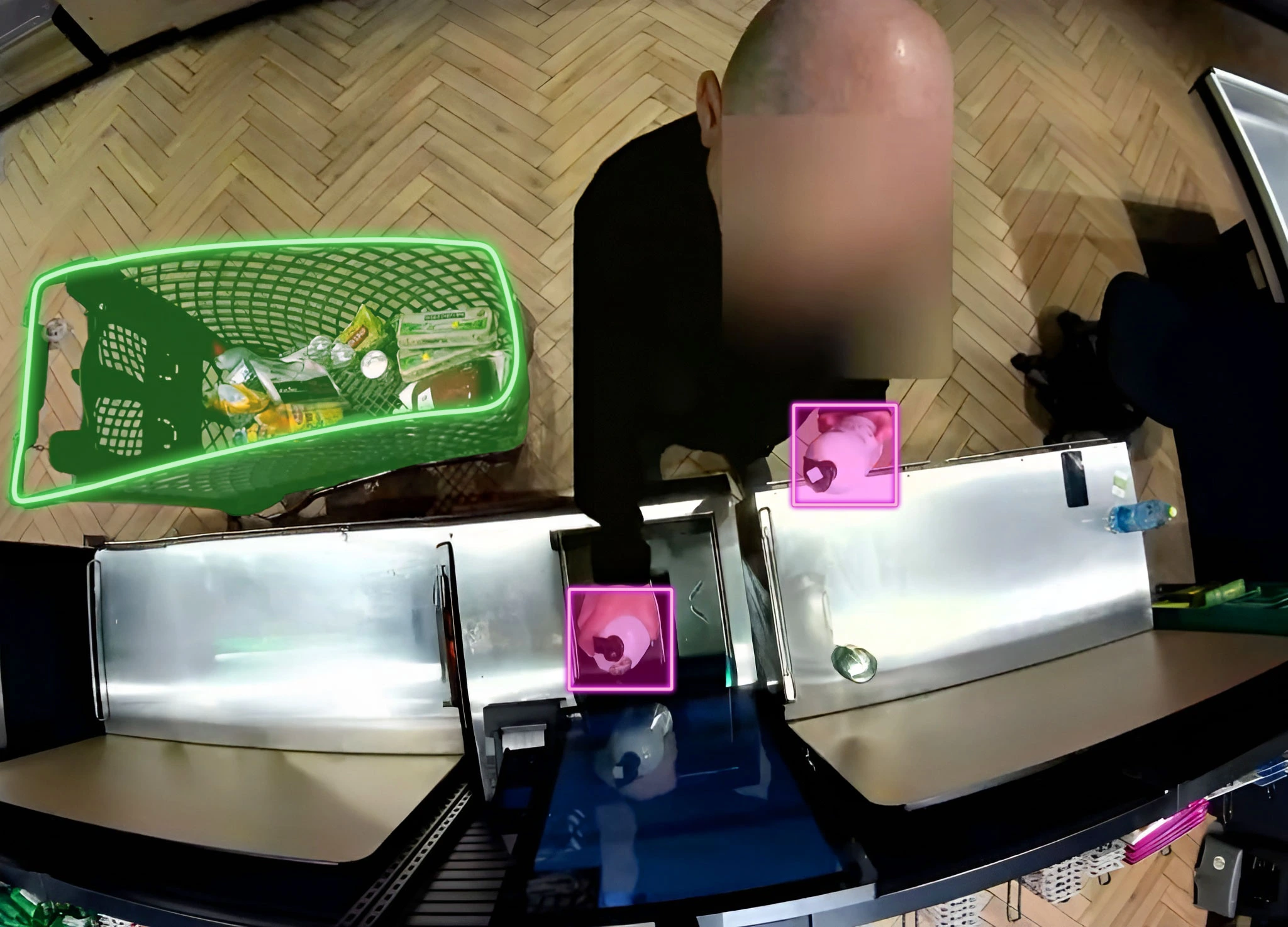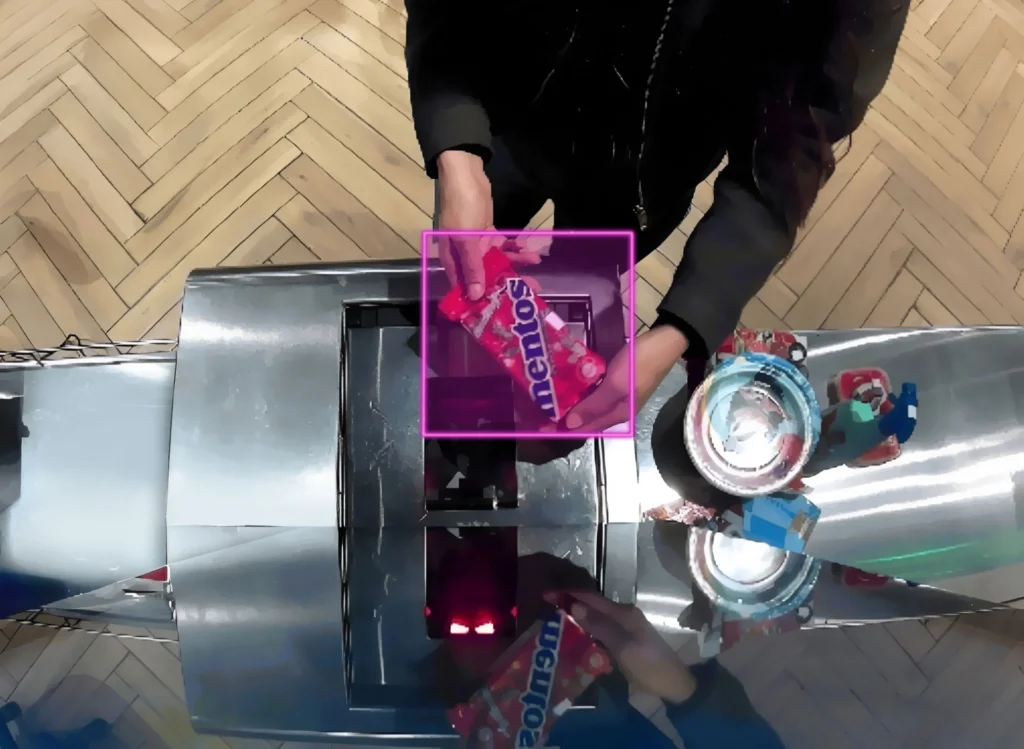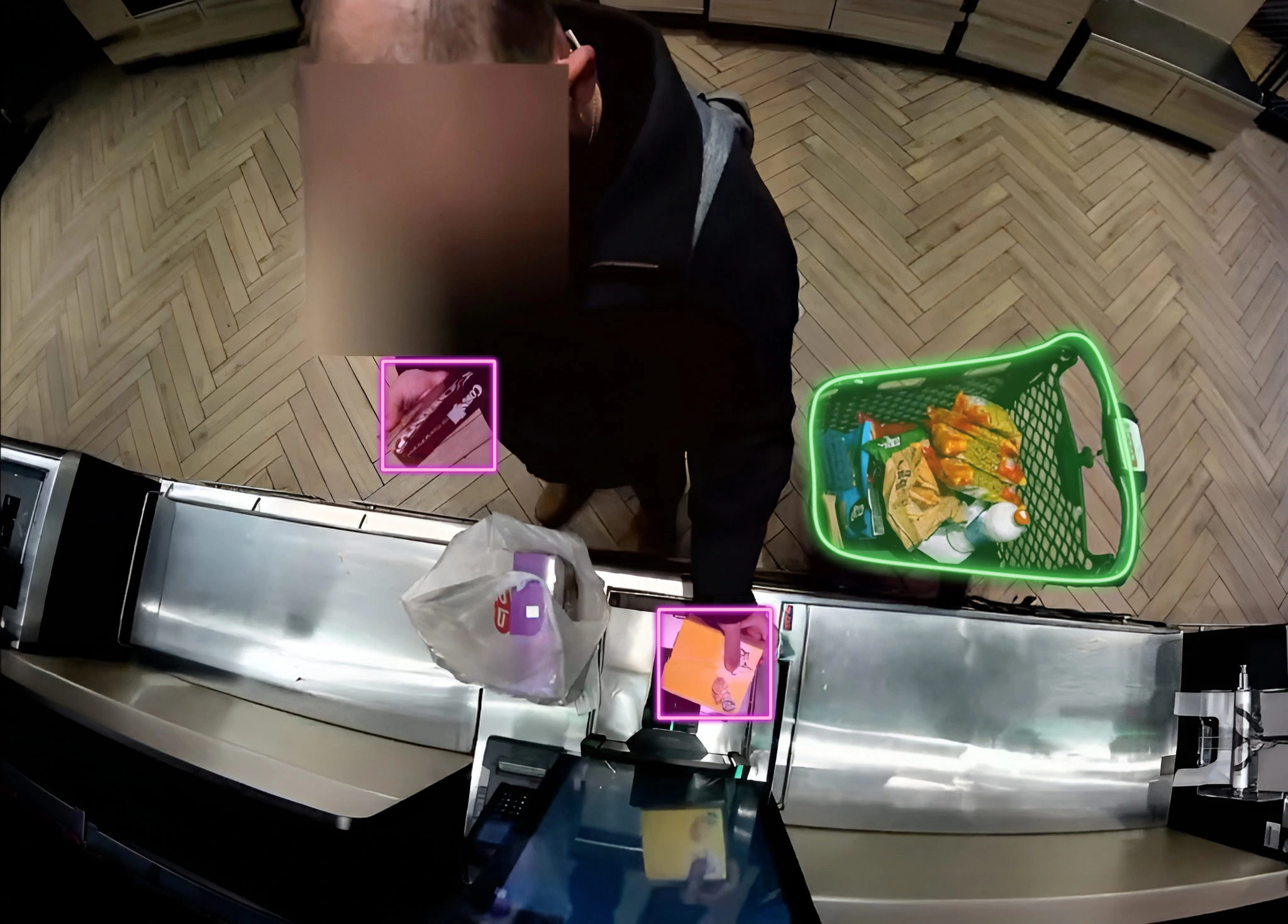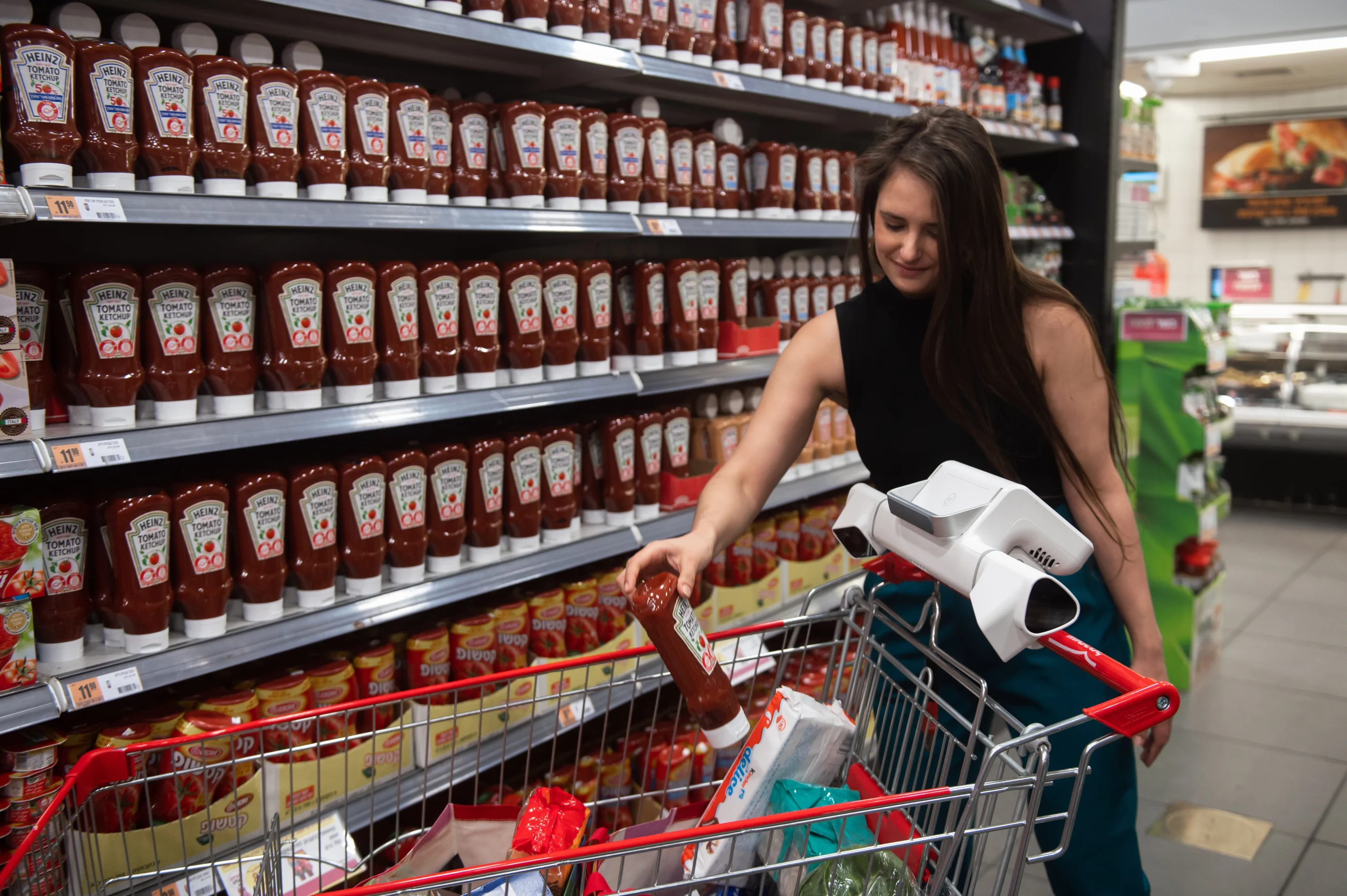
Self-checkout has become a core part of modern retail. Shoppers value the speed and autonomy it offers, but for store staff, it introduces new challenges. Scanning mistakes, missed items, and theft are becoming more frequent, and they’re happening faster.
Legacy monitoring systems were never designed to handle the complexity of self-checkout today. Motion-based tracking and basic object detection don’t go far enough. That’s why we developed Shopic Loss Prevention, powered by Computer Vision: an AI solution that goes beyond the scanner to monitor the entire self-checkout zone. It is built for true item-level recognition, reduces false alerts through visual validation, and runs entirely at the edge.
Most systems today track movement and/or classify a few popular items. Some can tell a hand or a personal item from a product, and a few recognize basic scan behaviors. But in today’s complex retail environments, that simply isn’t enough. Shopic’s loss prevention solution is fundamentally different.
Using high-precision item recognition, Shopic can accurately differentiate between highly similar items, not just general categories, but specific brands, models, sizes, and types, but the key outcome is fewer false alerts. This means fewer unnecessary interventions and a smoother self-checkout experience for both staff and shoppers.

Where others see “a bottle” or “a box,” Shopic sees the exact item, even among nearly identical alternatives such as different pasta types. This isn’t just a momentary recognition either. Shopic’s technology tracks and identifies items throughout the checkout process, even across multiple movements, angles, and partial occlusions. It remembers and registers each item, giving a full context and confidence at every frame.
Recognition alone isn’t enough. That’s why our solution goes one step further. By matching the scanned barcode to the classified item in real-time, Shopic’s solution closes the loop: if the item that was scanned doesn’t visually match what was handled, it instantly detects the issue and alerts.
Mis-scans, barcode switching, whether accidental or intentional, are detected the moment they happen. By combining Computer Vision with barcode data in real time, Shopic provides a clear, immediate understanding of what’s actually being scanned. This allows retailers to reliably detect more cases of shrink at checkout and take action with confidence, while significantly reducing false alerts.
Speed is critical at self-checkout, and so is cost. That’s why Shopic’s Loss Prevention solution runs its AI processing directly on the edge, right on the self-checkout terminal itself. This edge-based setup ensures near-instant response times, enabling real-time prompts for shoppers and immediate alerts for staff, with no cloud delays or bandwidth issues. It also eliminates the need for expensive on-premise servers or costly cloud infrastructure and a fast and reliable Internet connection.
Shrink doesn’t just happen at the moment of scanning. Shopic Loss Prevention monitors the entire environment around the checkout station, tracking carts, baskets, and shopper behavior with the same high-precision item understanding. This enables accurate detection of common loss scenarios like left-in-cart items (and never scanned at the POS) or multiple item scams (scanning one item while sneaking others). By understanding context, not just motion, this solution reduces blind spots and catches what others miss.
With Shopic, every transaction becomes an opportunity to enhance the shopper experience, optimize staff efficiency, and protect revenue. With Shopic’s AI, store staff can:
Shopic Loss Prevention goes beyond basic detection. It recognizes every item, verifies it instantly, and keeps watch and covers the entire self-checkout process, in real time and at scale.
At the self-checkout, accuracy and speed matter. With Shopic’s Computer Vision-powered AI, shrink is no longer an unpredictable risk; it’s a challenge retailers are equipped to solve.


